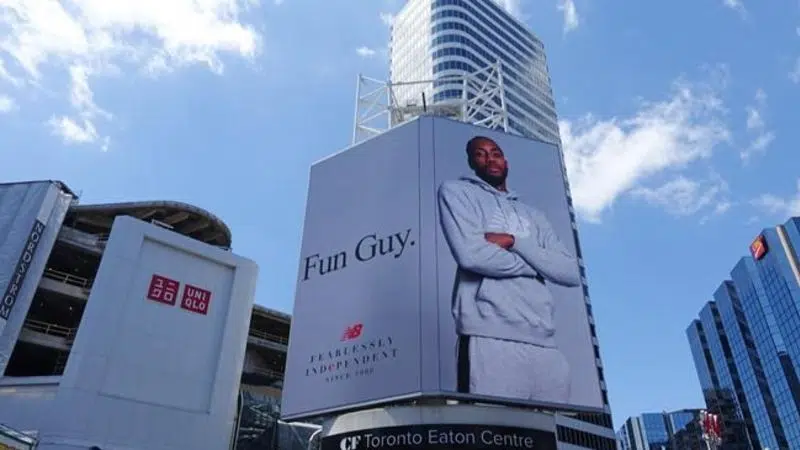
“Fun Guy” Kawhi the latest example of NBA branding
TORONTO — Kawhi Leonard’s likeness looks down from some 10 storeys high over Yonge-Dundas Square in the heart of downtown Toronto.
Arms crossed. Serious face. The tagline reads: “Fun Guy.” Leonard looks anything but. And that’s the appeal.
Credit New Balance for capitalizing on what began as an inadvertently funny line from Leonard at his introductory news conference in Toronto, followed by his oddball laugh. It exploded into a meme. And it’s since been embraced by Toronto Raptors fans who’ve fallen in love with the quiet superstar.


